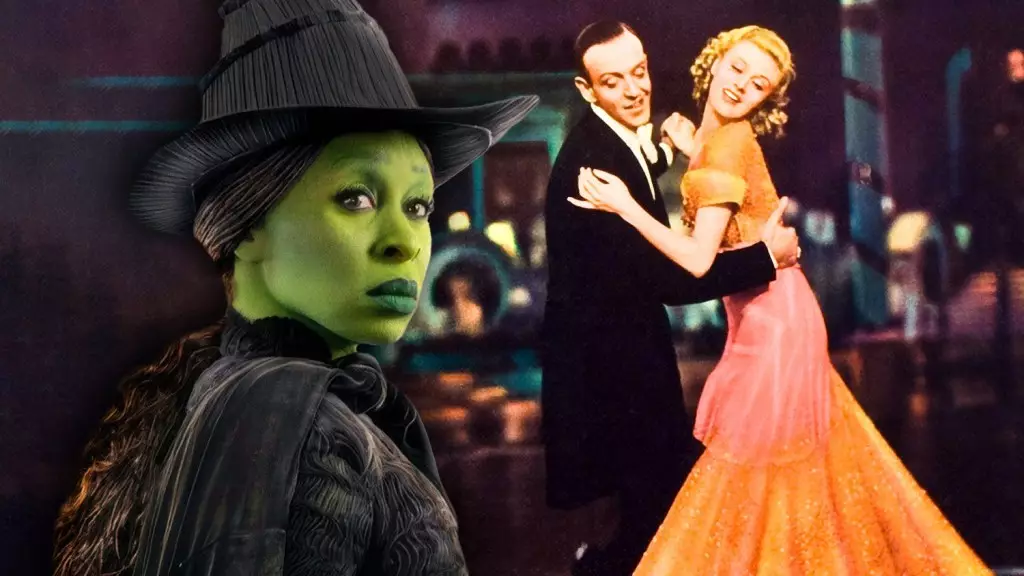The landscape of musical films has undergone a significant transformation in recent years, shifting from the jubilant escapism of classic Hollywood to a more nuanced and intricate portrayal of human emotion. Once characterized by cheerful melodies and light-hearted plots, contemporary musicals delve into complex narratives that resonate on deeper levels with modern audiences. This evolution mirrors changing societal values and artistic expectations—where joy is often counterbalanced by tension and depth.
Rediscovery of Old Classics and a New Generation
During the pandemic, many turned to nostalgic comforts, reviving old musicals like “Singing in the Rain” and “Top Hat.” These films served as emotional retreats, lifting spirits through infectious tunes and buoyant performances. However, as we emerge from those days, it’s worth examining the current crop of musicals that, while achieving commercial success and critical acclaim, often grapple with darker themes and layered characterizations.
The resurgence of the musical genre has been marked by a slew of nominations and accolades for notable actors such as Timothée Chalamet and Ariana Grande, demonstrating that while these films attract star power, they confront audiences with complexity rather than pure joy. Despite their financial achievements—like the impressive box office returns for “Wicked”—these modern adaptations replace the straightforward narratives of their predecessors with entangled, and at times unsettling, explorations of identity and emotional struggle.
The characters in today’s musicals reflect a departure from the simplistic, often one-dimensional personas of earlier times. Figures like Gene Kelly’s and Fred Astaire’s portrayed characters that resembled carefree dreamers without substantial personal conflicts. In contrast, the leads in contemporary productions like “Wonka” or adaptations of Bob Dylan’s life present individuals marked by inner turmoil and confusion, challenging the audience to reflect on genuine human experiences.
Timothée Chalamet’s embodiment of Dylan illustrates this shift effectively; his performance evokes a figure who, while iconic, grapples with self-doubt and the burdens of creativity. The narrative’s climax at the 1965 Newport Jazz Festival, where Dylan made a bold artistic choice that alienated some of his audience, underlines the conflict between artistic expression and public expectation. This moment signifies not just Dylan’s defiance but also the broader theme of personal struggle that characterizes current musicals.
Prestige and Performance: Anomalies in Representation
The modern musical has also paved the way for complexities not just in storylines, but in character relationships and societal commentary. For instance, Angelina Jolie’s portrayal of Maria Callas embodies the poignant decline of a celebrated artist, accentuated by her challenging relationship with billionaire Aristotle Onassis. In contrast, classic musicals often depicted love interests as uncomplicated and flawless.
In “Emilia Pérez,” the characters navigated their lives under the shadow of a Mexican cartel boss who dreams of transitioning, representing a diversity of experiences that reflect ongoing global dialogues about identity and acceptance. This shift is a testament to the evolving nature of storytelling within the genre, where narratives are crafted around the struggles of marginalized communities rather than the idyllic romances of yesteryear.
As musicals continue to secure their place in the cinematic arena, they reflect a blend of artistry that offers both entertainment and meaningful discourse. The landscape today is marked by a tension between traditional structures—the grand sets and powerful scores of musicals like “Wicked”—and the crises of modern characters. The duality of these elements serves to engage a contemporary audience increasingly drawn to stories that mirror their own complexities.
As the genre evolves, so too does its audience. While it may seem that the past offered more joyful experiences, the reality is that what we deem “joy” is now interwoven with the intricacies of human existence. This shift urges us to reconsider the definition of musical success: can joy exist alongside despair? In this question lies the future of the musical—one where laughter can coexist with tears, and where complexity reigns over simplicity.
The evolution of the musical not only redefines its own identity but also reshapes the cultural landscape, inviting audiences to reflect on their lived experiences through the lens of song and performance. As it stands, the modern musical is not just a revival of a past form but an exciting transformation into an art that resonates with today’s tumultuous world.


Leave a Reply